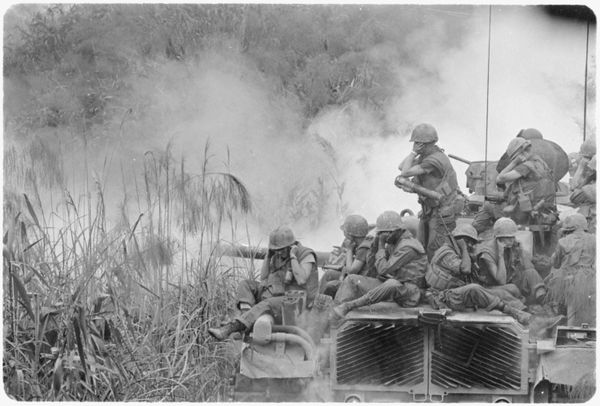Ho Chi Minh began his revolutionary learning to liberate Vietnam's poor while traveling the world and also while incarcerated in China after accused as a spy. He was Vietnam's figurehead in the Viet Minh and Hanoi North during the opposition to French colonial government. The French took a role in governing Vietnam but some in the North were opposed, this began the struggle of the Vietnam War.
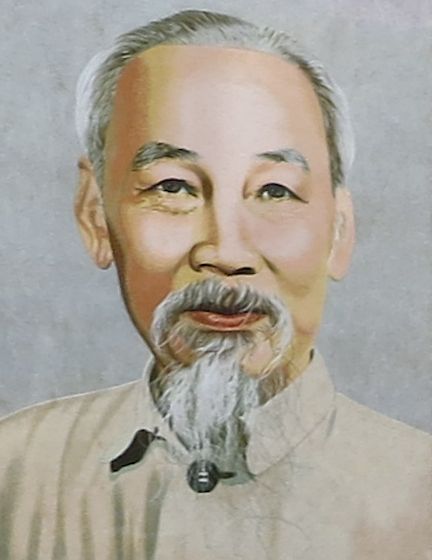
The Ho Chi Minh Viet Minh groups were armed mainly by Chinese and Soviet arms which were regions where Communist Revolutions already took hold. Viet Minh Military was led by Võ Nguyên Giáp. Viet Minh initially had support from the Americans during World War 2 when Japan was attempting conquests across Indochina. Ho Chi Minh and Giap's worldwide reputation began as defender's of Vietnam.
Viet Minh: anti-French front, 1941–1950s
Viet Cong: 1960s NLF Southern insurgents
American representatives in government began to realize that the brewing Communist revolution in Vietnam could cause widespread violence. Figuring that the World War 2 expenditures and improvements in the American military would offer a quick solution to Vietnam's violence America started to talk action first with calls for assistance from France during the 8 year French Indochina War. When the pivotal battle sparking further problems ended, known the Battle of of Dien Bien Phu both sides were forced to the negotiating table and the signing of the 1954 Geneva Accords divided Vietnam into North and South.
Vietnam was divided. This caused the population to struggle for answers and some turned to North's Communists ideologies and some turned to the protection offered by the South with allies like America. Ho Chi Minh was skilled due to his travels and was able to build propaganda to ascend and build armies to defeat colonial powers. The government set up to govern the South constantly struggled due to Ho Chi Minh's propaganda targeting colonial powers of America and France. Furthermore the Southern government lost a lot of popular support when a Buddhist Monk incinerated himself in opposition to actions by the South.
Ho Chi Minh Trail was known as the passageway to the south by criss-crossing the jungle pathways along the western border of Vietnam and fueled the Viet Cong caches of weapons and food. As American involvement grew with attempts to secure the Southern Government, the opposition also grew. America under President Eisenhower and President Kennedy were mainly focused on supplying monetary assistance to the Southern government, under Johnson major military actions escalated.
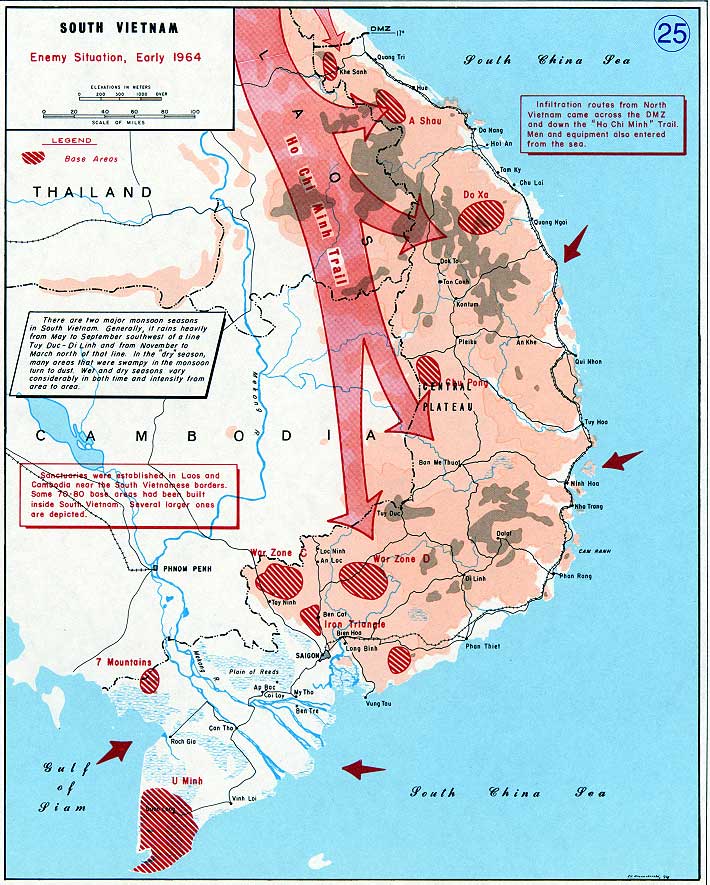
In 1963 American CIA officers involved groups in the South Vientnam Army (ARVN) in a coup of the Ngô Đình Diệm overthrowing the leader of the South. With CIA rebels growing their influence in the direct actions of the South things began to escalate.
America's funding and interventions began to grow tremendously under President Johnson. False reporting of a torpedo ship attacking an American Navy ship in the Gulf of Tonkin was publicized in America and caused further involvement of America by the military.
Assistance given to ARVN began to grow as leaders in America attempted to thwart the spread of Communist revolutions. In 1965, Operation Rolling Thunder was authorized by President Johnson. This was an Operation to bomb infrastructure/supply lines (e.g., bridges, depots). The aerial bombardment and escalations grew the hatred of colonial powers.
Often throughout this war the government of South Vietnam never achieved full support from the local population. The aerial bombings fueled Northern resolve/hatred of the Southern government. Popular American opinion of involvement in the war was never high, American struggled to get behind the White House and the involvement in a local conflict on the other side of the world. With citizens being drafted to service protests against the American involvement spread.
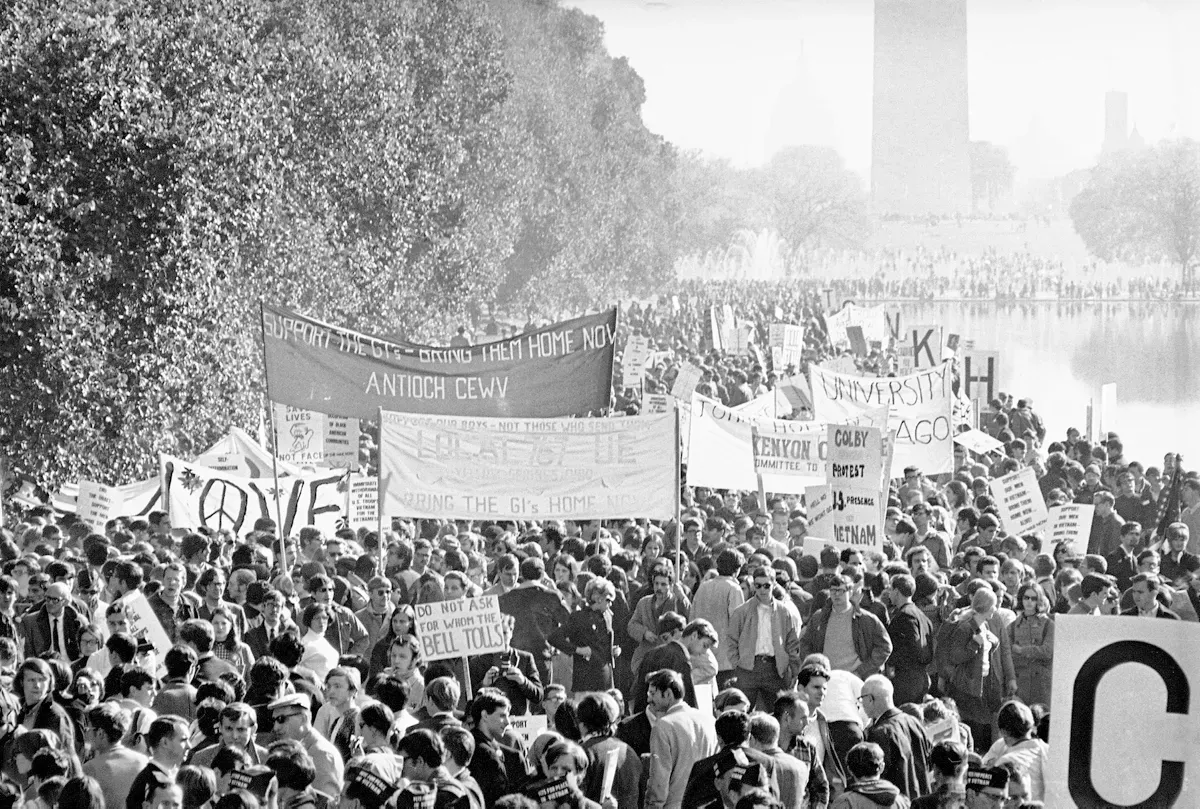
The 1968 Tet Offensive was an operation against South Government and American targets by Viet Cong forces. The Viet Cong leadership thought they could exploit the growing protests and popular hatred of a war in Vietnam and launched targeted strikes at South Vietnam outposts.
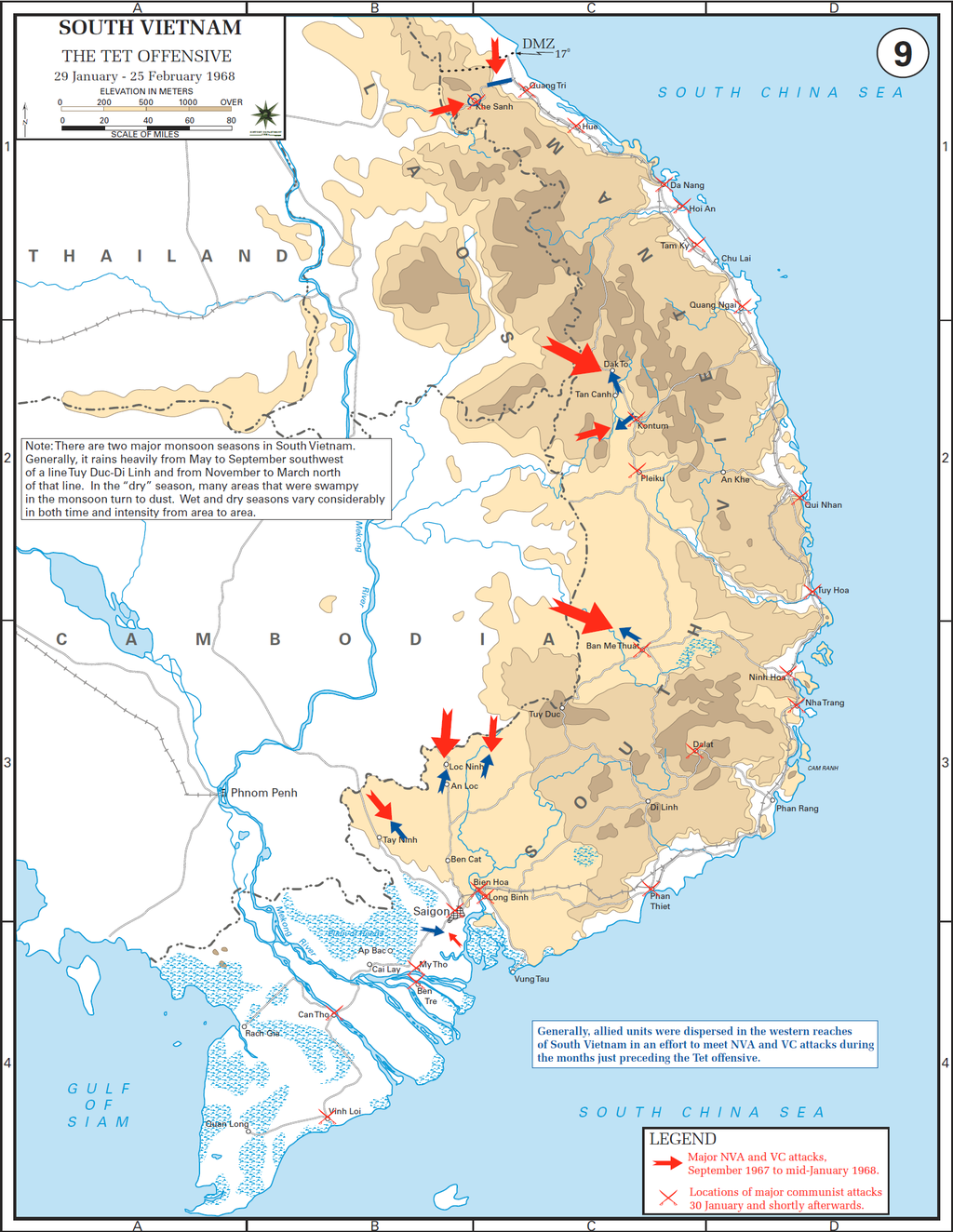
With the spread of local outbreaks American allied forces started to mount further operations to stop the spread which the Gulf of Tonkin Resolution authorized. The list of operations is numerous with an Allied goal of securing the Southern region against violence by communists.
President Nixon continued the war but started to replace American troops with Vietnam troops which signaled an end to America's direct involvenement. A major operation Nixon authorized was Operation Linebacker which authorized aerial bombardment to reduce the supply of arms from the North. These operations forced the north to the negiotating table where an agreement was signed known as the Paris Peace Accords.
Now Saigon of the South is known as Ho Chi Minh City and remnants of the colonial dilemma remain in Vietnam culture. Vietnam is now a mixed economy with economic remnants of the communist rule still in place, however trade freely flows with America now and most look back with sadness on both sides at the lives lost during the struggles in the First Indochina and the American involvement.
Bibliography
Hastings, Max. Vietnam: An Epic Tragedy, 1945-1975. HarperCollins, 2018.
Langguth, A J. Our Vietnam : The War, 1954-1975. New York, Simon & Schuster, 2000.

